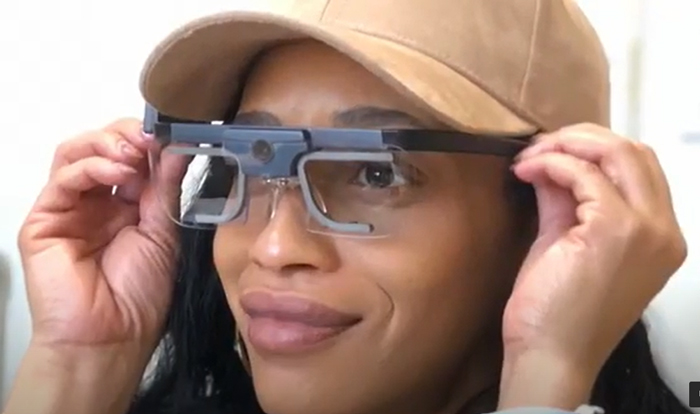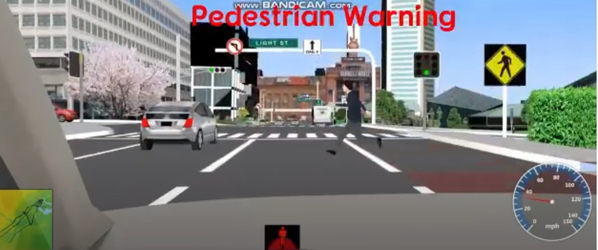Since the success of these initial projects the SABA Center has now expanded and has two full-size FORUM8 driving simulators and a bicycle simulator allow for the study of driver and cyclist behavior. The simulators can be connected so that researchers can study reactions among drivers and cyclists, and they let researchers conduct studies that would be difficult and dangerous to do in real life.
The bike simulator consists of a stationary bike and a monitor. One driving simulator has three monitors, including a simulated rear-view mirror, and a full-size driver's seat and controls such as steering wheel, gas and brake pedals, turn signals, etc. The other driving simulator offers a motion-sensing platform so that drivers feel elements such as rumble strips and potholes, and it has a clutch pedal and stick shift.
The software of both the driving and bike simulators, VR-Design Studio developed by FORUM8 Co., visualizes roads, bridges, ramps, roadside objects, three-dimensional trees and buildings, etc., and provides a fairly realistic environment for drivers and cyclists, including different types of weather. It is capable of creating and editing entire road network elements such as road alignments, intersection design, traffic signals, cross sections, roadside signs, terrain setup, and traffic generation. Study participants can be given the option of choosing their own route from origin to destination.
Data such as lane-changing, acceleration, braking, steering control, speed, and crashes are recorded by the driving simulator software. Different levels of autonomous driving and connected infrastructure can occur. Although the hardware cannot be altered, the software can be adjusted for factors -- such as the view and blind spots based on a driver sitting higher and the rate of acceleration and braking -- to study driver behavior in larger vehicles such as trucks and buses.
 |
| A laboratory in Safety and Behavioral Analysis (SABA) Center |
An eye-tracking system indicates where a driver is looking and for how long. That allows researchers to study all types of distractions, from text messages to billboards, on all types of roads.
The SABA Center also has a portable driving simulator that can be taken off site; recently researchers took it to a police department so that they could safely study how marijuana influenced drivers.
The SABA Center's recent research projects include studying the impacts of different distractions while driving on different types of roads; seeing how well drivers react to the new warning systems in cars such as collision warning; the effects of dynamic message signs on drivers; how best to provide information to drivers, and testing eco-cooperative adaptive cruise control systems for a variety of vehicles.
The addition of the new bicycle simulator adds an extra dimension to the road safety research and will enable SABA Center Director Dr. Mansoureh Jeihani to carry out more in-depth research into Cyclists' Safety through the Integration of Bike Simulator with Driving Simulator, Eye Tracker, and Microsimulation Software. Other areas of research will include Equity, Bike for All, and People with Disabilities, Traffic Signs and Pavement design as well as Planning and Travel Demand Forecasting.
 |
 |
| UC-win/Road eye-tracking system is used for the research |
They also studies on situations that would be difficult and dangerous to do in real life including the simulation of pedestrians rushing out into the road. |
|
